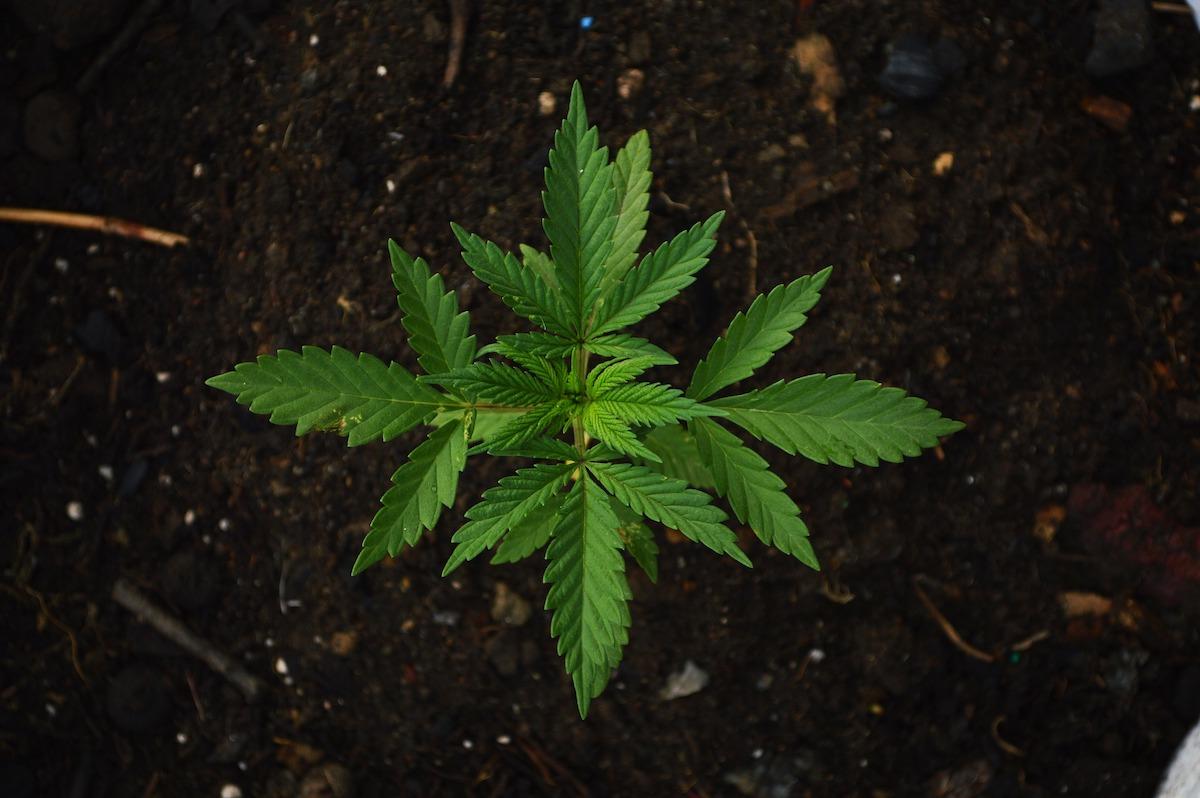
The legal cannabis industry in the U.S. may grow to $50 billion by 2026, expanding to more than eight times its current size. In the recent midterm elections, Michigan joined nine other states and Washington, D.C. in legalizing recreational marijuana. Utah and Missouri joined the 22 states that already approved access to medical marijuana. Nationally, support for marijuana legalization is stronger than ever—62 percent of Americans say marijuana should be legalized.
This is great news for the cannabis industry and its investors, but is it good news for the environment? Growing cannabis for commercial production is associated with some pretty significant environmental impacts.
Cannabis is often grown indoors, requiring extensive use of grow lights and equipment powered by the electricity grid. In the U.S., 1 percent of all energy usage is attributed to indoor cannabis growing, and 4,600 kilograms of carbon is released into the atmosphere for every kilogram of marijuana produced. In California, indoor cannabis production represents 3 percent of energy usage, more than is produced in the Hoover Dam.
A 2016 report from New Frontier found that marijuana is the “most energy intensive agricultural crop produced in the U.S.” A report earlier this year from Colorado Public Radio showed that Denver’s marijuana industry accounts for nearly 4 percent of the city’s total electricity use.
Focus on energy efficiency
Regulatory requirements and an illegal growing mentality has led farmers to simply scale the indoor growth approach. But is there a better way? An increasing number of growers and cannabis companies are finding that they can reduce overhead and increase profits by making cannabis production more sustainable.
“You can’t downplay how much of an impact energy efficiency has and energy costs have for cannabis producers. It’s a significant factor,” John Downs of cannabis investing firm The Arcview Group told Big Buds, a website for marijuana growers.
Energy-related costs can account for as much as 50 percent of what it takes financially to run an indoor grow, according to the Southwest Energy Efficiency Project.
Canada’s Green Organic Dutchman, a research and development company for medical marijuana, struck a deal with a local energy provider and was able to reduce its energy expenses from the average 13 cents per kilowatt-hour to around 4 cents. That reduction in operating costs made the brand significantly more competitive in the cannabis market, Big Buds reported.
Taking advantage of incentive programs
Some indoor cannabis growers are taking advantage of incentive programs to stem their production costs. An Oregon company called Deschutes Growery created a method of growing recreational marijuana indoors that's rooted in energy efficiency, thanks in part to sustainable growing techniques the company developed over time and the energy-saving incentives it sought from the Energy Trust of Oregon.
Deschutes developed its own system of movable racks, LED lights, and programmable monitors to multiply growing space, cut utility costs and reduce the time its plants take to flower. The company mixes and recycles its own growing medium and uses biological pest control, including nematodes, predatory mites and natural oils, rather than chemical pesticides. The company, which claims to be the first solar-powered indoor cannabis farm in the state, set a goal to become carbon-neutral—offsetting the energy it consumes with conservation measures—in three years.
State-of-the-art growers are also using machine learning technology to determine the minimum amount of light needed to produce the largest yields. Smart-sensor systems can measure how much light each plant receives to help fine-tune lighting arrangements.
Tackling high water usage
Cannabis is also a high water-use plant—each plant consumes up to 23 liters of water per day. A company called GrowX found a way to conserve water by using a system called “aeroponics,” in which the marijuana plant is suspended by its roots in a moist environment. Water vapor keeps the plant hydrated. Not only does aeroponics require 95 percent less water than outdoor farming and 40 percent less water than indoor hydroponic farms, GrowX claims it can yield 300 percent more product than traditional yields.
Another firm, Aquatonix, uses a water treatment device to increase water absorption in cannabis, leading to an increase in the photosynthetic efficiency and crop yield while minimizing environmental impact. In recent trials in Humboldt County, California, growers using Aqutonix increased cannabis yield by 43 percent while decreasing their water usage
Outdoor growing has its challenges
Outdoor growing has its own set of environmental impacts. A study from Ithaca College found that planting cannabis in remote locations for commercial production is creating forest fragmentation, stream modification, soil erosion and landslides. Without land-use policies to limit its environmental footprint, the impacts of cannabis farming could get worse.
“Cannabis leaves a small spatial footprint but has potentially significant environmental impacts,” said co-author Jake Brenner, associate professor in the Department of Environmental Studies at Ithaca College. “To mitigate these impacts, policymakers and planners need to enact specific environmental and land-use regulations to control cannabis crop expansion during this early stage in its development.”
Pesticide use another concern
Use of pesticides in marijuana growing also has environmental advocates worried. “Until California gets serious about making clean water and our environment a priority over legalizing marijuana, pesticides will continue to be abused by growers regardless of the impact they have on our resources,” Stephen Frick, assistant special agent in charge of the Forest Service in California, told The Independent.
Frick said the state does not have the capability to monitor and enforce illegal chemical usage associated with the increased cultivation of cannabis.
Bodē Loebel, the founder of Bodē Wellness, a Colorado company that makes topicals and extracts infused with cannabidiol (CBD), the non-psychotropic cannabinoid compound derived from the hemp plant, told TriplePundit he would like to see statewide legislation that prohibits use of pesticides in growing cannabis.
Hemp is grown from the same plant genus, cannabis, but has only trace amounts (less than 0.3 percent), of tetrahydrocannabinol, THC, the chemical responsible for most of marijuana's psychological effects. Hemp, Loebel said, is “inherently sustainable. Growing hemp is an outdoor venture, grown without any need for pesticides.”
Investing now to weather the market
Making investments in more sustainable production is smart business, said Derek Smith, executive director of the Resource Innovation Institute, an organization that promotes sustainable practices in the cannabis industry. Energy, in the form of electricity and natural gas, ranks behind labor as an indoor grower’s greatest expense, he explained, and producers could be in a much better financial position going forward if they prioritized energy efficiency.
“To me, that is the holy grail of sustainability—when the economics of the investment start to make sense,” Loebel said.
While a number of companies are seizing advantages with sustainable production, and new solutions are coming on the market, many cannabis producers don’t seem concerned enough about energy use. Maximizing production now at the expense of the environment could end up being a short-sighted approach, experts say.
One sign of that is the market. While cannabis stocks have shown unprecedented growth over the past year, some analysts are calling the market over-hyped and warning that the boom could soon be over. Making efficiency improvements should help cannabis companies in it for the long haul to weather upheavals in the market and continue to deliver to the ever-growing American appetite for cannabis.
Image credit: Pixabay

Based in Florida, Amy has covered sustainability for over 25 years, including for TriplePundit, Reuters Sustainable Business and Ethical Corporation Magazine. She also writes sustainability reports and thought leadership for companies. She is the ghostwriter for Sustainability Leadership: A Swedish Approach to Transforming Your Company, Industry and the World. Connect with Amy on LinkedIn and her Substack newsletter focused on gray divorce, caregiving and other cultural topics.














